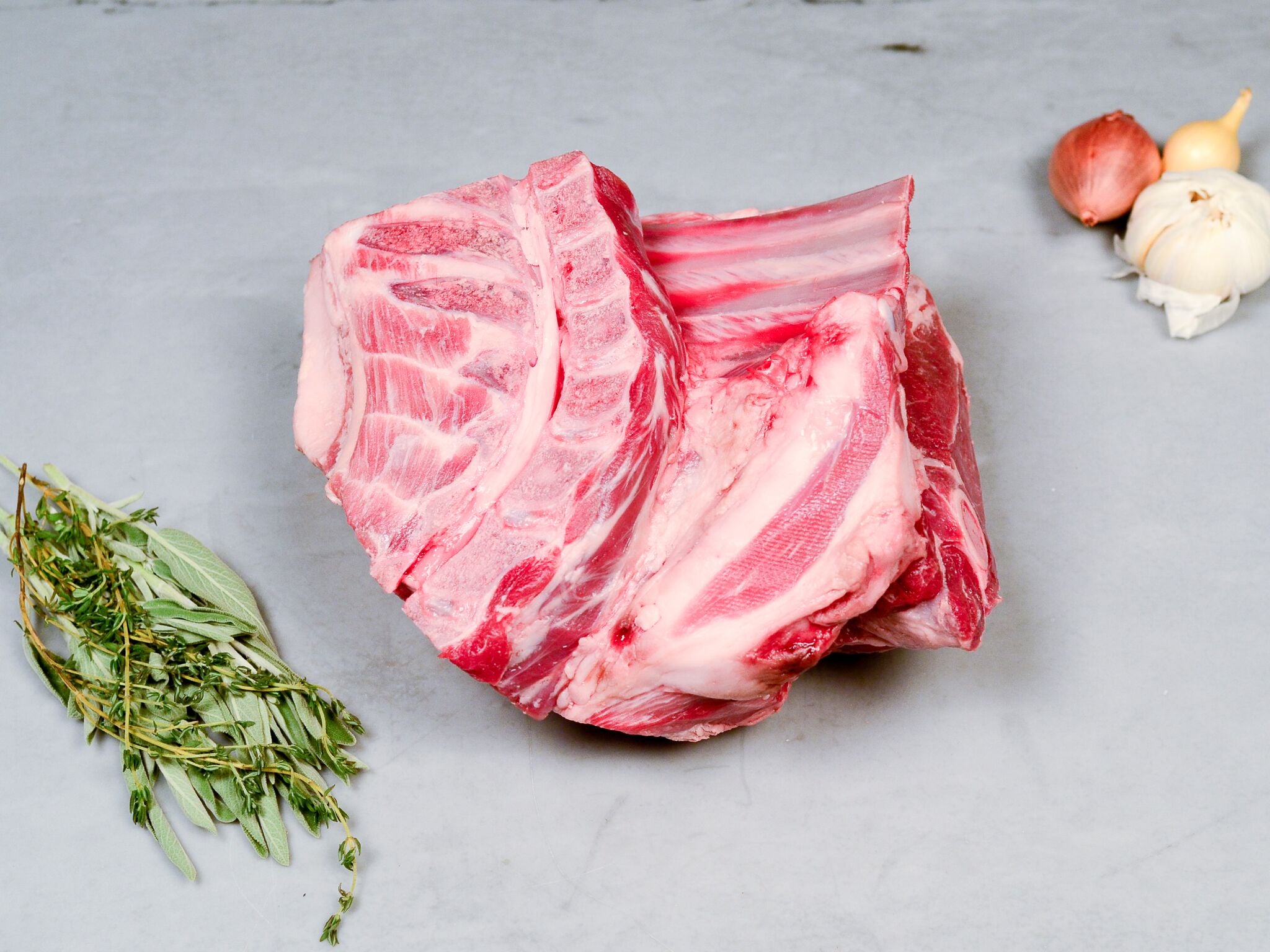

Bone-in — Shannon Creek Farm
Goat Shoulder
Shannon Creek Farm, Kansas Flint Hills
Choose your preferred weight from the dropdown menu above.
Goatober is 15 years old! October is the natural season for goat meat, and as we have for over a decade, we are proud to feature cuts of goat as part of our effort to celebrate just how delicious goat meat is.
Those who experience goat for the first time marvel at how bright, lean, and floral it is. This roast is the perfect hearty addition to winter and spring meals, or is incredible cooked low and slow on the grill. Shoulder meat is a perfect filling for tacos, sandwiches or as a stand alone centerpiece. We recommend covering the roast thoroughly in salt, pepper, olive oil, and rosemary sprigs. Preheat the oven to 400 degrees and then roll it down to 325 to roast the goat, for several hours, until the internal temperature reaches 145 for a perfect medium rare (or a little bit less, as the roast will continue to cook after leaving the oven).
Although leaner than beef or lamb, goat meat is rich and flavorful and boasts light floral notes in every bite. Because goat meat has less fat, it lends itself to slow and low cooking including braises and barbecue — see our Cooking Tab for more information!
Goatober has come a long way since the great cheesemonger Anne Saxelby came up with the idea 15 years ago! Goatober was launched because dairies need to produce milk to make cheese, and the only way for an animal to make milk is to have babies. On goat dairies, whenever a male is born, unless it’s kept as a breeder, there is not much use for it since males do not produce milk and the market for male goats is not a large one in the United States. Some male babies are sold onto the commodity market to lead unhappy lives in confinement while others are euthanized.
We wanted to launch a project to keep all the kids on the farm, roaming the pastures, while also providing an additional source of income to the farmers. The natural mating cycle of goats is to be born in the spring and be ready for processing in the fall — that is why we call the project Goatober although it has gone by other names too like No Kid Left Behind!
Since 2010 Goatober has grown to become a celebration of all things goat, the most widely consumed protein on the planet!
Goat cuts ideal for slow and low cooking like braises and barbecue include leg, shoulder, ribs, and shanks, and goat chops and rack can be seared in a pan.
How to Prepare
1. Take the roast out of the refrigerator an hour prior to cooking.
2. Preheat your oven to 400℉, then roll it down to 325℉ when you put the roast in.
3. Season liberally with salt and pepper on all sides.
4. Sear on all sides in a hot pan until browned.
5. Move to a roasting pan lined with a rack and cook at 325℉ for 30 minutes checking the meat every 15 minutes thereafter until the roast reaches your desired internal temperature (130℉ approximately for goat to medium rare.) The internal temperature will continue to rise slightly after leaving the oven. Let rest for 10-15 minutes before carving.
© 2025, Heritage Foods Powered by Shopify
